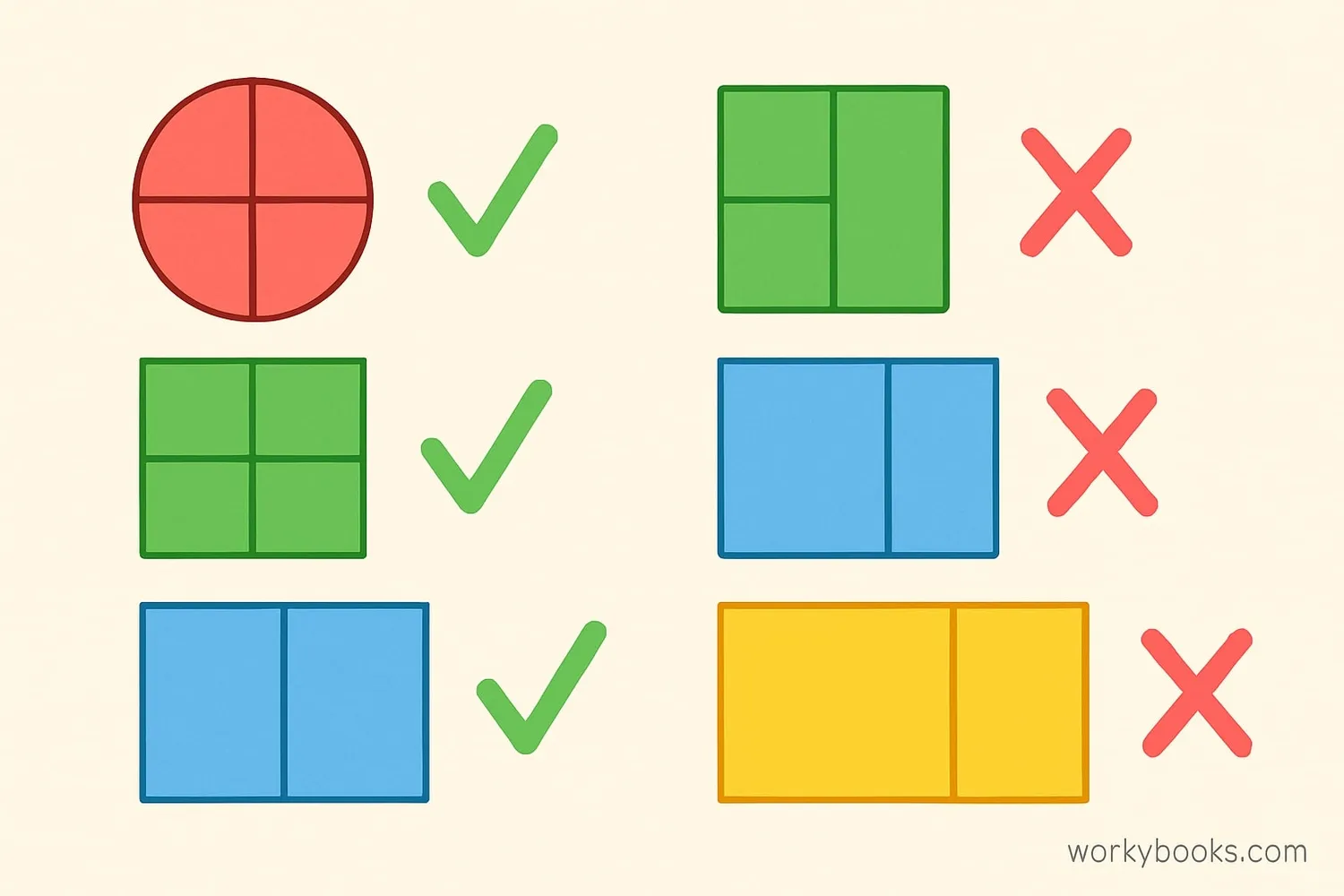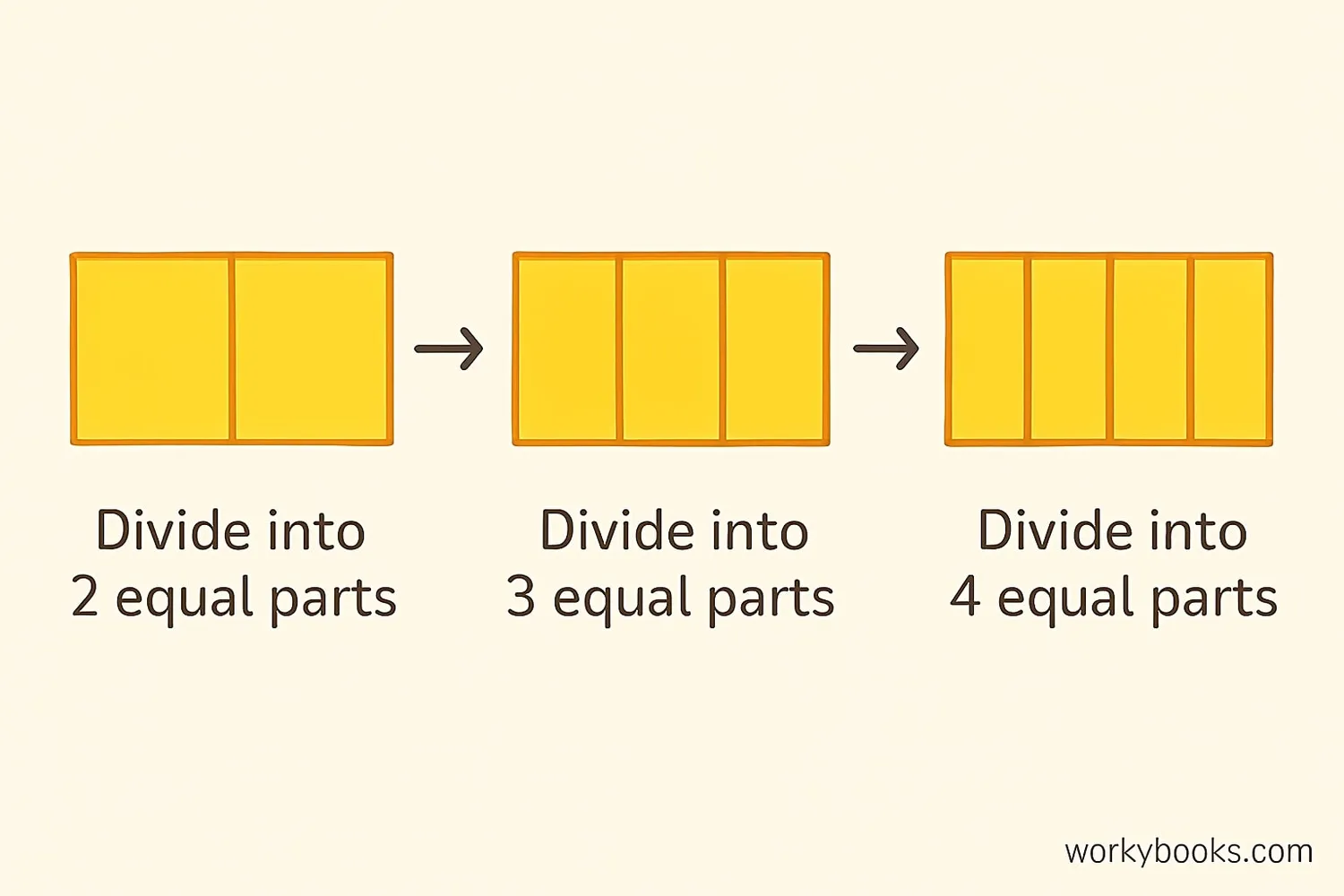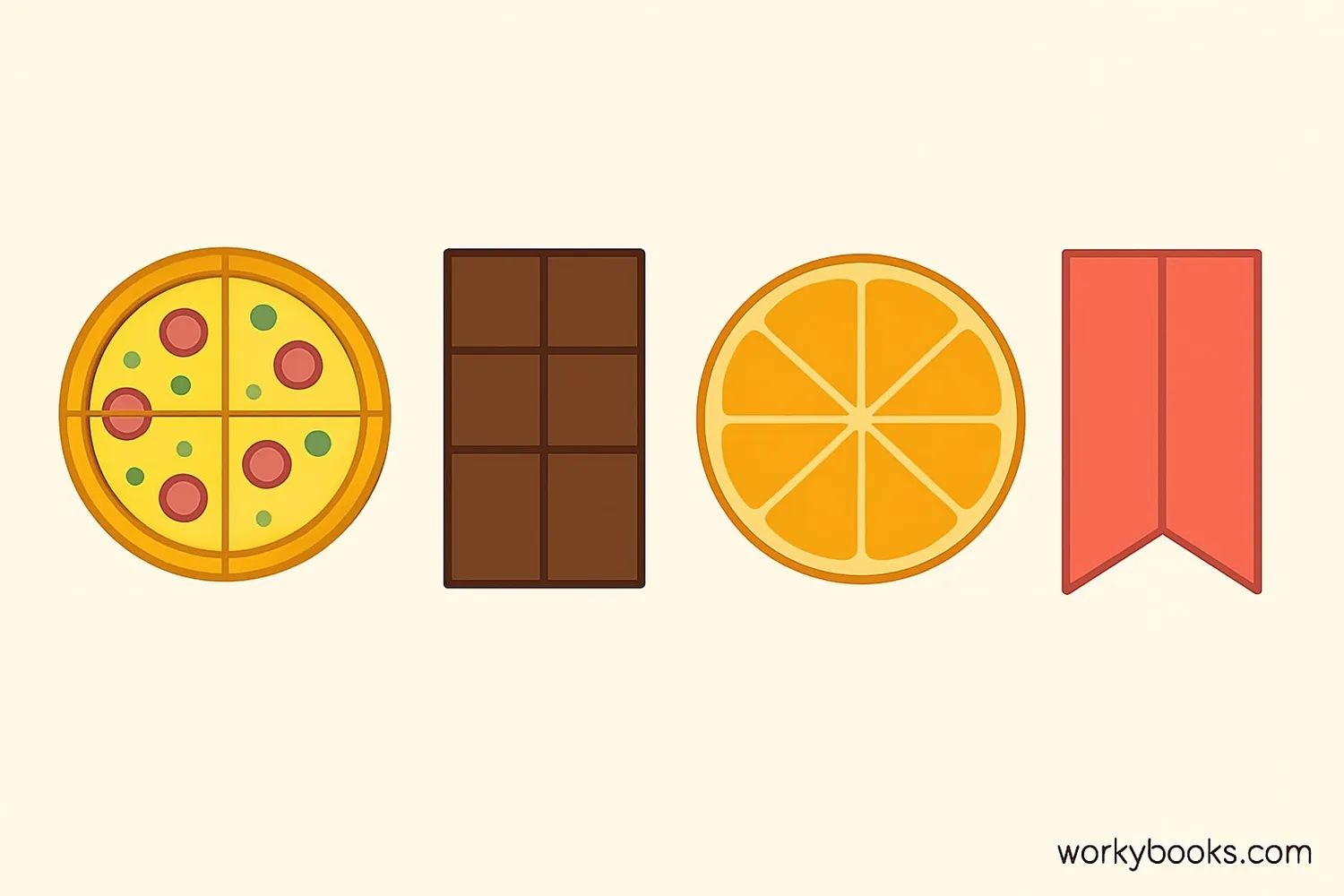Equal Parts - Definition, Examples, Quiz, FAQ, Trivia
Learn to identify, create, and work with equal parts of shapes and wholes with visual examples and practice activities
What Are Equal Parts?

Equal parts are portions of a whole that are exactly the same size. When we divide something into equal parts, each part is identical in measurement to all the other parts.
Understanding equal parts is the foundation of fractions. When we say something is divided into halves, thirds, or quarters, we're talking about equal parts.
For example, when you split a sandwich exactly down the middle so both people get the same amount, you've created two equal parts. If one piece is bigger than the other, they are unequal parts.
Key Concept
Equal parts must be identical in size and shape. If parts are different sizes, they are not equal parts.
Partitioning Shapes into Equal Parts

Partitioning means dividing something into parts. When we partition shapes into equal parts, we need to make sure each part is exactly the same size.
Important Rule
For parts to be equal, they must be identical in both size and shape.
Rectangles and Squares: Use straight lines that are equally spaced. For halves, draw one line through the center. For quarters, draw two lines (one vertical, one horizontal) through the center.
Circles: Draw lines through the center point. The angle between lines determines the number of equal parts (180° for halves, 120° for thirds, 90° for quarters).
Triangles: Draw lines from vertices to opposite sides at precisely measured points.
Remember
The names of equal parts change based on how many parts you create: 2 parts = halves, 3 parts = thirds, 4 parts = quarters or fourths.
Examples of Equal Parts

Equal parts are all around us in everyday life. Here are some common examples:
Food Examples:
- A pizza cut into 8 equal slices
- A chocolate bar divided into squares
- An orange separated into equal segments
Other Examples:
- A ruler divided into centimeters or inches
- A clock face divided into 12 equal hours
- A dollar divided into 100 equal cents
Practice Identifying:
Look at these shapes and determine if they are divided into equal parts:
Real World Connection
When we share food or divide things fairly with friends, we're using the concept of equal parts without even realizing it!
Equal Parts Practice Quiz
Test your understanding of equal parts with this 5-question quiz. Choose the correct answer for each question.
Frequently Asked Questions
Here are answers to common questions about equal parts:
Math Trivia
Discover interesting facts about mathematics and equal parts:
Ancient Fractions
The ancient Egyptians used fractions as early as 1800 BC. They primarily used fractions with a numerator of 1 (like 1/2, 1/3, 1/4), which made understanding equal parts very important to their mathematical system.
Equal Parts in Nature
Honeybees create honeycombs with hexagonal cells because this shape allows them to divide space into equal parts with the least amount of wax. This efficient use of materials is a natural example of equal partitioning.
Pizza Fractions
Most pizzas are cut into 8 equal slices, making each slice 1/8 of the whole pizza. This is why pizza is often used to teach fractions - it's a delicious example of equal parts!
Time Division
Our system of time is based on equal parts: 60 equal parts (seconds) make a minute, 60 equal parts (minutes) make an hour, and 24 equal parts (hours) make a day.





